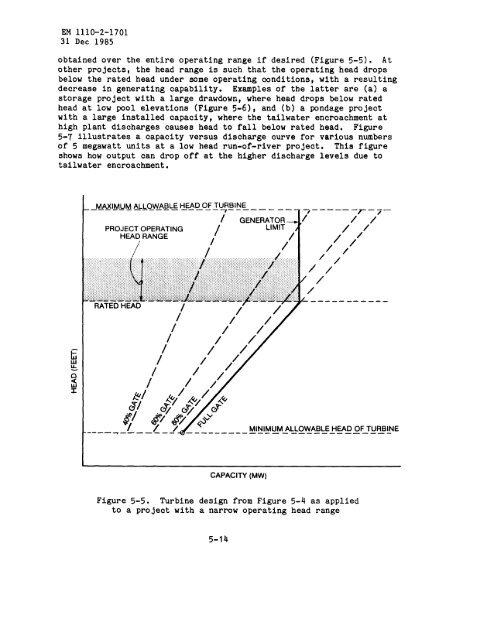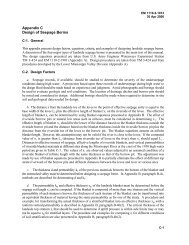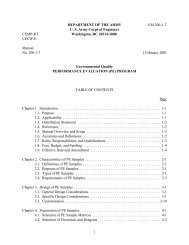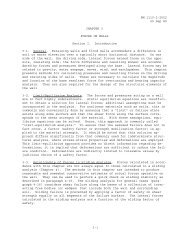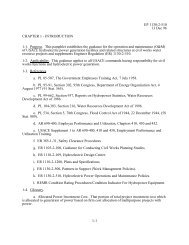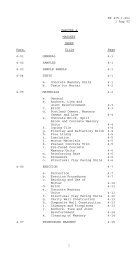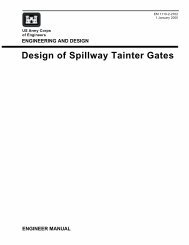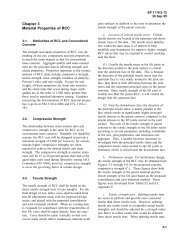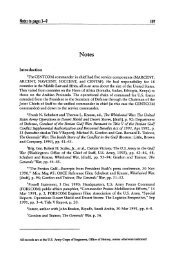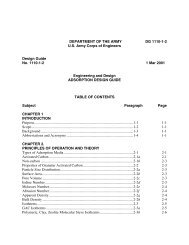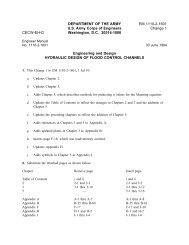Chapter 5 - Publications, US Army Corps of Engineers
Chapter 5 - Publications, US Army Corps of Engineers
Chapter 5 - Publications, US Army Corps of Engineers
Create successful ePaper yourself
Turn your PDF publications into a flip-book with our unique Google optimized e-Paper software.
EM 1110-2-1701<br />
31 Dec 1985<br />
obtained over the entire operating range if desired (Figure 5-5). At<br />
other projects, the head range is such that the operating head drops<br />
below the rated head under some operating conditions, with a resulting<br />
decrease in generating capability. Examples <strong>of</strong> the latter are (a) a<br />
storage project with a large drawdown, where head drops below rated<br />
head at low pool elevations (Figure 5-6), and (b) a pondage project<br />
with a large installed capacity, where the tailwater encroachment at<br />
high plant discharges causes head to fall below rated head. Figure<br />
5-7 illustrates a capacity versus discharge curve for various numbers<br />
<strong>of</strong> 5 megawatt units at a low head run-<strong>of</strong>-river project. This figure<br />
shows how output can drop <strong>of</strong>f at the higher discharge levels due to<br />
tailwater encroachment.<br />
MAXIMUM ALLOWABLE HEADOFTU7RBINE<br />
——. -— — ————— — ——— — — —-—— —-— —<br />
.-_— -<br />
PROJECT OPERATING<br />
HEAD RANGE<br />
/<br />
/<br />
/<br />
––_–__.r_7_<br />
/ GENER~~TO~ /’ //<br />
/<br />
~<br />
/ -/<br />
CAPACITY<br />
Figure 5-5. Turbine design from Figure 5-4 as applied<br />
to a project with a narrow operating head range<br />
5-14


